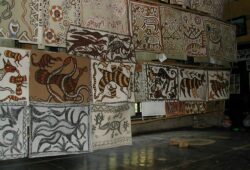Egon Schiele: Capturing the Raw Essence of Human Experience in Paintings
 Posted On
Posted On
Egon Schiele, an Austrian painter renowned for his unique artistic vision, left an indelible mark on the art world with his evocative and daring paintings. Born in 1890 in Tulln, Austria, Schiele’s work is often characterized by its raw emotional intensity, distorted forms, and unapologetic exploration of the human body. His short but prolific career produced a plethora of works that continue to captivate and provoke contemplation to this day.
Schiele’s artistry was heavily influenced by the Expressionist movement, which sought to convey the inner emotional states of the artist rather than a literal depiction of reality. This allowed him to create a distinctive style that pushed boundaries and challenged societal norms. His paintings often depicted elongated and contorted figures, presenting the human body in ways that were both sensual and unsettling. Schiele’s mastery lay in his ability to capture the tension between beauty and discomfort, drawing viewers into a realm of emotional complexity.
One of Schiele’s most famous works is “The Self-Seers” (1911), a mesmerizing exploration of self-perception. In this painting, Schiele depicted two figures intertwined, their elongated bodies forming a sort of symbiotic relationship. The introspective gaze of the figures invites viewers to consider the intricate connections between individuals and their inner selves. Schiele’s use of color and line work adds an additional layer of depth to the composition, emphasizing the psychological aspects of the subjects.

Another iconic piece, “Portrait of Egon Schiele” (1910), showcases his ability to convey vulnerability and self-awareness. The self-portrait portrays Schiele with a sense of disquiet, his stark and angular features revealing the inner turmoil of an artist grappling with his identity and place in the world. The use of harsh lines and muted tones intensifies the emotional impact of the painting, allowing viewers to glimpse into the artist’s psyche.
Schiele’s daring exploration of the human form and sexuality in works such as “Seated Male Nude” (1910) and “Female Nude with Green Stockings” (1918) ignited controversy during his time. His willingness to challenge societal norms through his art often led to confrontations with authorities and even periods of incarceration. However, his unwavering commitment to authentic self-expression solidified his legacy as a trailblazer in the art world.
Tragically, Schiele’s life was cut short at the age of 28 during the influenza pandemic of 1918. Despite his untimely death, his influence endured, inspiring generations of artists to push the boundaries of artistic expression. Schiele’s work laid the groundwork for the development of modern figurative art and continues to captivate enthusiasts and collectors around the world.
In conclusion, Egon Schiele’s paintings stand as a testament to his unbridled creativity and his unflinching exploration of the human experience. Through his use of distorted forms, bold colors, and emotional depth, Schiele transcended conventional artistic norms, leaving an indelible mark on the art world. His legacy remains alive and well, reminding us that art has the power to challenge, provoke, and evoke the most profound emotions within us.



